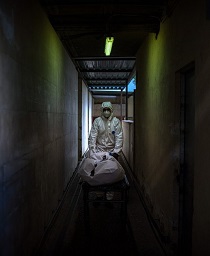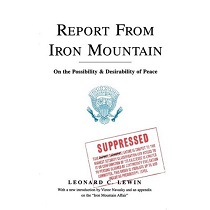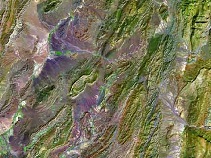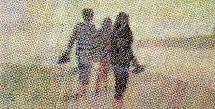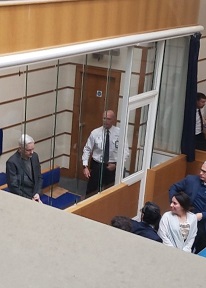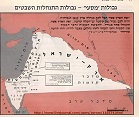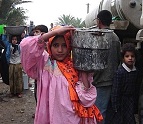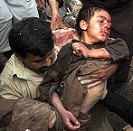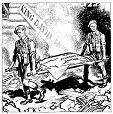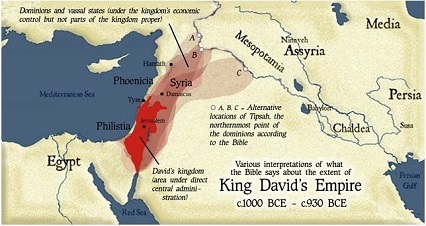What Israel is really after in Syria
Soraya Sepahpour-Ulrich (Soraya Sepahpour-Ulrich)
Let there be no mistake - Syria today is in turmoil in order to promote Israel’s grand strategy - even as the perpetrator - Israel, plays the victim and warns of chemical weapons use by Assad’s regime, demanding intervention.
For some time now, the predominant narrative about Syria has been that the unrest has been fueled in order to weaken Iran. This prevalent account is common to neoconservatives and liberals alike.
While the New York Times trumpeted Israeli-firsters Senators John McCain and Lindsey Graham message that “rebel fighters deserved to be armed and that helping them take on the Syrian government would aid Washington’s effort to weaken Iran,” moderate and independent outlets such as Truthout, Counterpunch, and numerous others reported this same objective, except for that it decried the plan. Even Iran’s state-run media shares this account.
This is sheer misdirection - deliberate or otherwise. Undisputedly, Syria and Iran have been staunch allies since the Iranian Revolution in their joint cause to protect the Palestinian rights and to stand up to Israel and America; and any change in Syria may adversely affect Iran (as it would Russia). But this is a secondary consideration. The generally accepted narrative takes the focus away from the primary reason for the current assault on Syria - Israel.
Since the 1948 war, Syria and Israel have been in a state of war (with brief periods of unsuccessful negotiations). The conflict has been primarily over land and water. Since the 1950s, the conflict over water (and land) has been at the root of the hostilities between the two. In the 1950s, Eisenhower commissioned Eric Johnston to generate a regional water allocation agreement. The failure of the Johnston plan exacerbated the conflict. The published diaries of Israeli Foreign Minister Sharett help understand why the Johnston negotiations were unsuccessful. Sharett maintained, “[P]olitical decisions concerning the occupation of the rest of Eretz Israel were taken as early as 1954, although implemented in 1967.”
The 1967 occupation of Syria’s Golan (Golan Heights) and the Upper Mount Hermon by Israel enabled Israel to seize the entire Upper Jordan River, giving the Israeli regime the advantage of placing its riparian position to fully upstream. Consequently, not only was Syria denied access to Upper Jordan waters, but its territorial and national integrity were assaulted.
Some years later, Haaretz would reveal the existence of a study (Jaffee Center for Strategic Studies, Tel-Aviv university) under General Aaron Yariv, a former intelligence services chief, which outlined a “zone of hydraulic security,” which called for placing water resources in Syria and Lebanon under full Israeli control. Disputes continued unabated and the status quo maintained until 1982 when the military prowess of both sides were tested.
A 1987 book by Col. Emmanuel Wald of the Israeli General Staff entitled “The Ruse of the Broken Vessels: The Twilight of Israeli Military Might (1967-1982)” reveals the aims of the 1982 invasion of Lebanon and the month of pre-planning that had gone into it. Wald writes that Ariel Sharon’s master plan codenamed “Oranim” was to defeat the Syrian troops deployed in the Bekaa Valley all the way to the district of Baalbek in North of Lebanon. According to Wald, “during the first days, it was quietly approved by the U.S.”
With this aim, on June 6, 1982, Israel advanced into Lebanon. However, the Syrian army halted the Israeli army advance in the battle of Sultan Yakub and the battle of Ain Zahalta. Sharon’s plan to conquer all of Lebanon and destroy Syria as a military power was thwarted. In reviewing the book and the battles, the famous scholar and activist, Israel Shahak, opined that “the principal purpose of the Israeli invasion of Lebanon was destruction of the Syrian Army.”
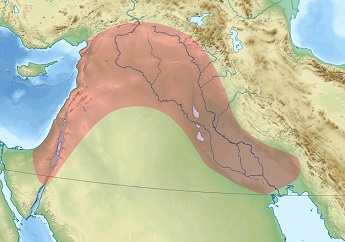
The Fertile Crescent is a crescent-shaped region containing the
comparatively moist and fertile land of otherwise arid and semi-
arid Western Asia, and the Nile Valley and Nile Delta of north-
east Africa. The concept today retains meanings in international
geopolitics and diplomatic relations. (Wikipedia)
Shahak posits that Israel needs to win its wars quickly or not at all. In spite of purported technological and nuclear superiority, another assault on Syria would not predictably bring an easy win to Israel and defenses could ‘drag out a war endlessly.’ He further argues that during the entire history of the Israeli regime, Israeli Jews have shown themselves to be highly sensitive to their losses, and high losses make Israelis “susceptible to political arguments against modes of domination and oppression which they otherwise would accept.”
Shahak’s analysis shed a light on the events that pursued the failure of “Oranim” as outlined in “The Syria Imperative.” Israel continues to pursue its grand strategy, using a different tactic given its awareness of, and its familiarity with the strengths of the Syrian army - an army which must be disrupted from within given Israel’s 1982 failure to do so. And this is the primary reason for arming terrorists posing as “opposition.”
It is not without irony that Netanyahu has recently admitted that he does not rule out arming Syrian rebels, given Israel’s age-old tactic of arming minorities or rebels and cultivating dissent and chaos (such as the Anya Nya in Sudan, later the Sudanese People Liberation Army (SPLA), and the leader of the Sudanese rebels, John Garang, armed by Israel from neighboring countries). This is a scenario being repeated in Syria.
Paradoxically, the [Persian] Gulf Cooperation Council ([P]GCC), which is today on a mission to secure Israel’s vision (with a nod from Washington) by arming rebels and undermining Syria, were all in favor of securing Syria in 2003 when they told Washington, "We think the threat to Syria should stop. We don't think Syria wants a war or to escalate any situation. We reject any infringement of Syria's security.” There is no end to their duplicity.
Amos Yadlin, the outgoing military intelligence chief, warned the Knesset Foreign Affairs and Defense Committee in November 2010 that Israel's next war would take longer and be fought on more fronts.
Yaldin warned that Syria, in particular, posed a greater military obstacle to Israel than at any time in the past three decades. It would appear that the unrest in Syria has allayed his concerns. The Syrian forces that put up such a resistance in 1982, are now engaged in fighting terrorists, while the world is being told that they are the violators. Perhaps Netanyahu’s plan will succeed where Sharon’s Oranim failed.
Regardless, it is important to change the accepted narrative about the unrest in Syria. Given the decades-long demonization of Iran, it may be more palatable to associate the fueling of unrest in Syria to a ‘weaker’ Iran, but let there be no mistake - Syria today is in turmoil in order to promote Israel’s grand strategy - even as the perpetrator - Israel, plays the victim and warns of chemical weapons use by Assad’s regime, demanding intervention.
___________________________________________________________________________________
Stephen Lendman, Israel's Longstanding Middle East Plan
Oded Yinon, "A Strategy for Israel in the Nineteen Eighties" /
Israel Shahak, "The Zionist Plan for the Middle East"[*]
___________________________________________________________________________________
[*] 22 - Lebanon's total dissolution into five provinces serves as a precendent for the entire Arab world including Egypt, Syria, Iraq and the Arabian peninsula and is already following that track. The dissolution of Syria and Iraq later on into ethnically or religiously unqiue areas such as in Lebanon, is Israel's primary target on the Eastern front in the long run, while the dissolution of the military power of those states serves as the primary short term target. Syria will fall apart, in accordance with its ethnic and religious structure, into several states such as in present day Lebanon, so that there will be a Shi'ite Alawi state along its coast, a Sunni state in the Aleppo area, another Sunni state in Damascus hostile to its northern neighbor, and the Druzes who will set up a state, maybe even in our Golan, and certainly in the Hauran and in northern Jordan. This state of affairs will be the guarantee for peace and security in the area in the long run, and that aim is already within our reach today. [Oded Yinon]
___________________________________________________________________________________
Article published here: PressTV. Map 1: © N/A. Map 2: Wikimedia commons
URL: http://www.a-w-i-p.com/index.php/2013/04/28/what-israel-is-really-after

